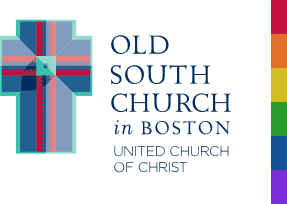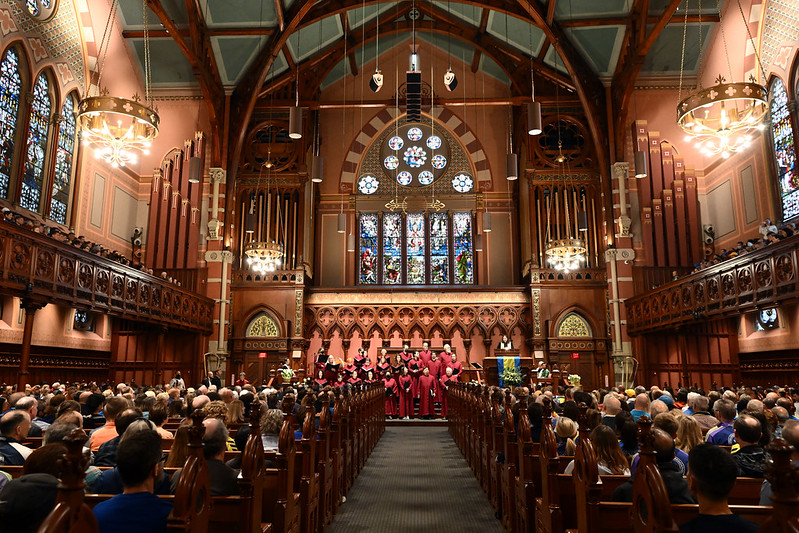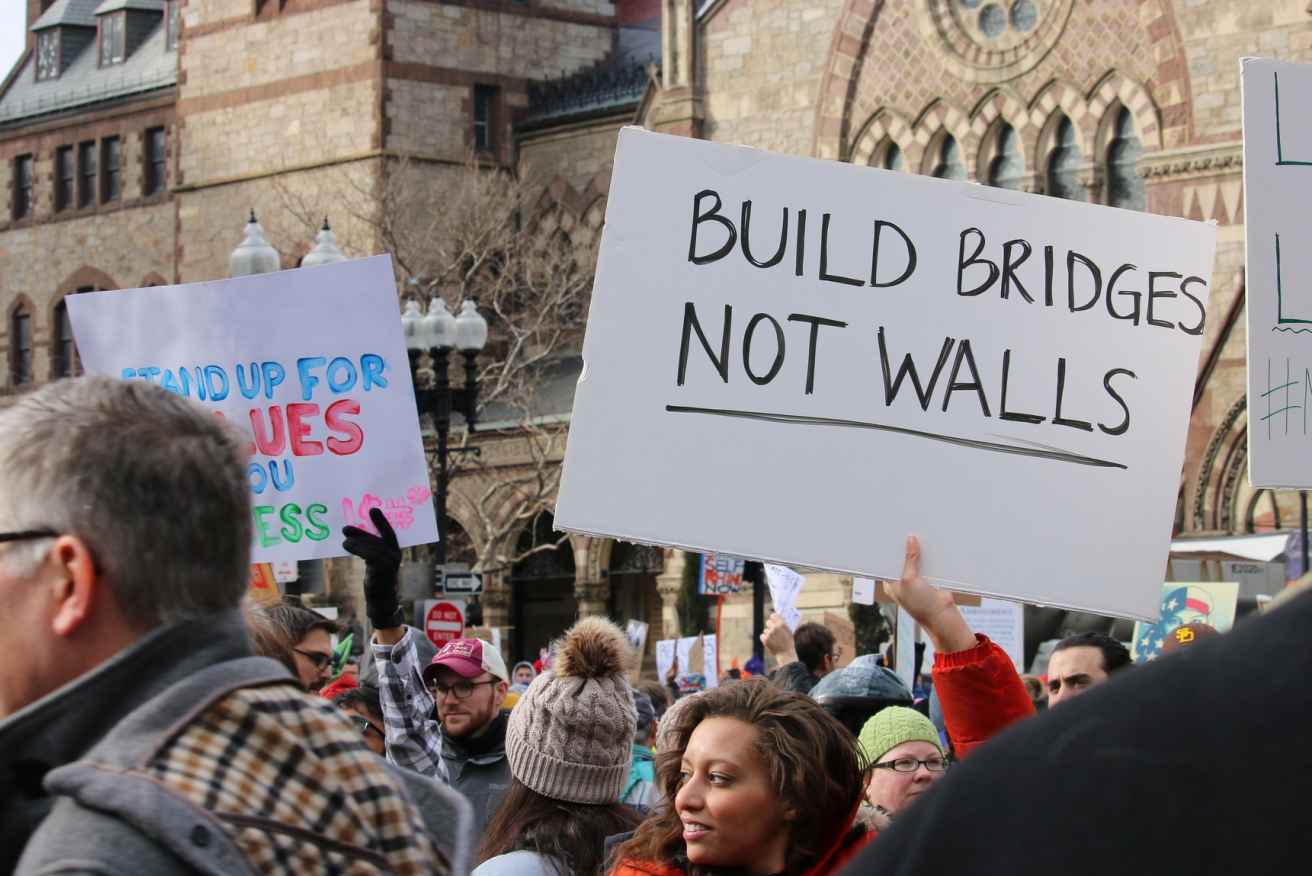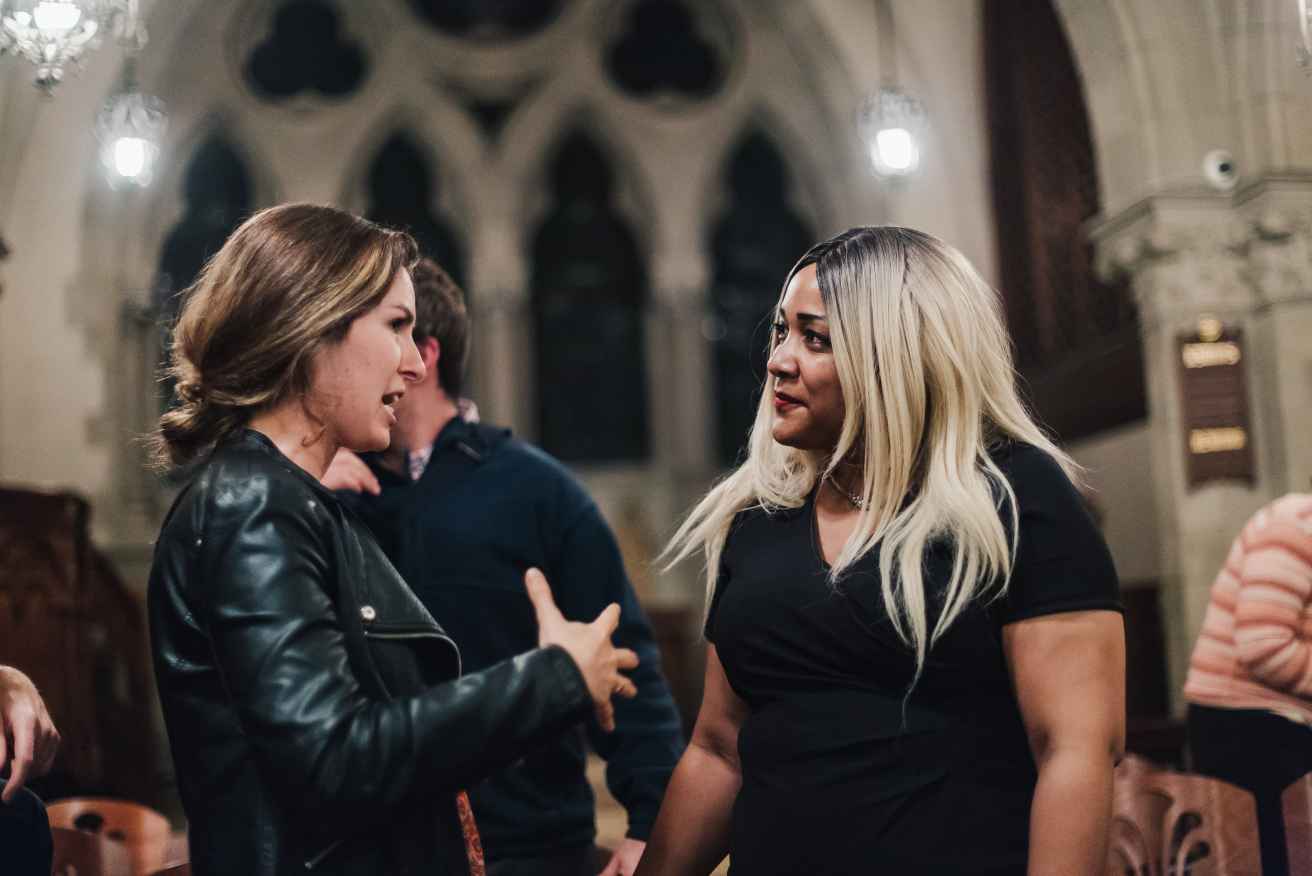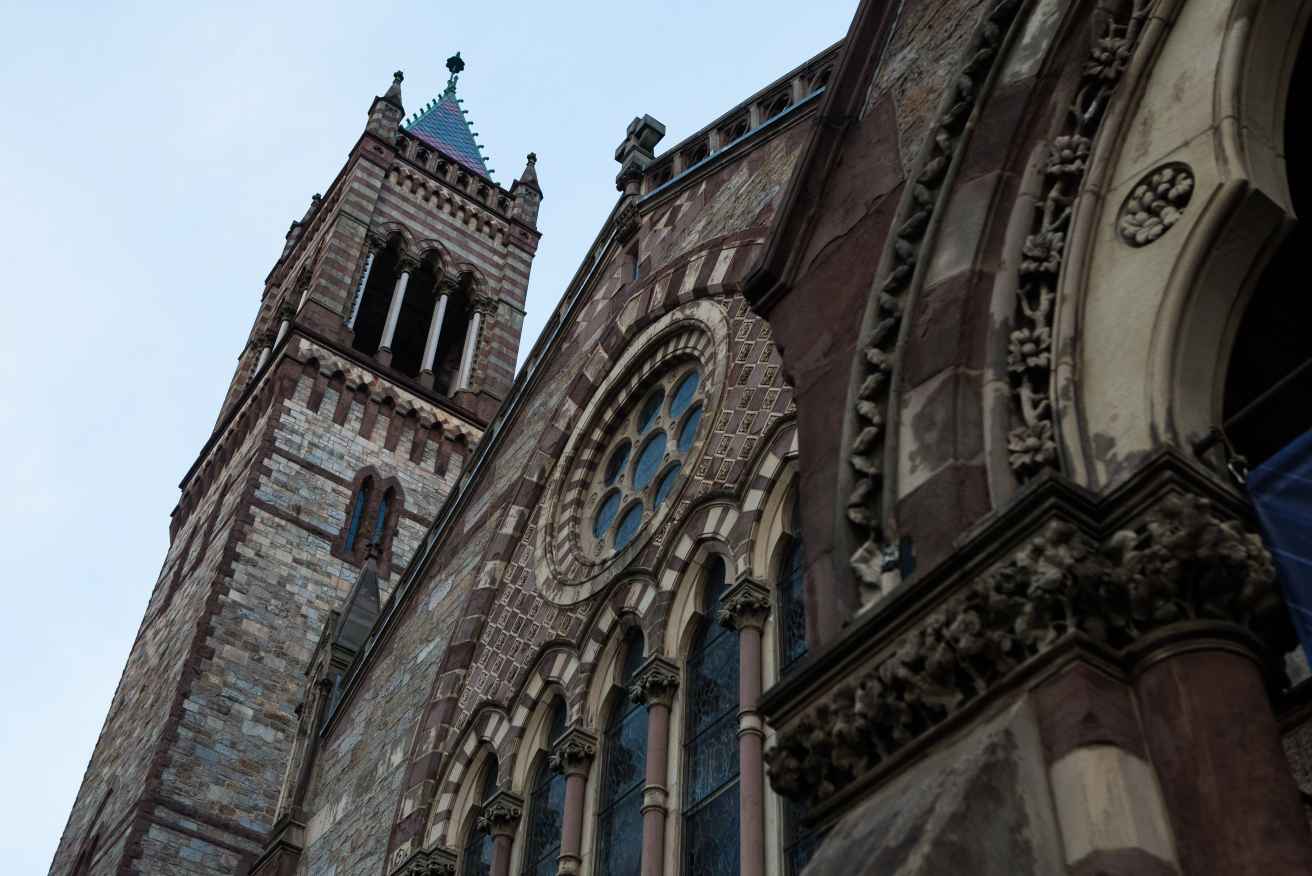Festival Worship - Martin Luther King, Jr. Sunday
Festival Worship - Martin Luther King, Jr. Sunday
Bringing in the Sheaves – The Dream of E Pluribus Unum
Transcript
Good morning, friends! As I begin, I want to thank my good sister and friend Rev. Dr. Nancy Taylor for this invitation to speak to you this morning. I am humble and grateful to have the opportunity to speak in this sanctuary and to a community that traces its lineage to the spiritual forefathers of race amity, or racial friendship. To share my thoughts this morning in a community that has a wonderful legacy for race amity is a joy to my soul and I hope that in some small way something that I might say in the course of my remarks will bring joy and happiness to each of you and that it will influence and strengthen your efforts too, in words of a popular song, “make this world a better, if we can. “
This summer I had a wonderful experience in the small chapel, which is just across the hallway. A small group of us had gathered for the monthly Race Amity Devotions and Dialogues that were the outcome of the Metro Boston Race Amity celebration held on the Rose Kennedy Greenway last June and which has become an annual event with the Proclamation issued by Mayor Menino that the Second Sunday in June Annually is Boston Race Amity. The organizing group decided that it was wonderful in June to have 1800 or so people show up on the Greenway for an afternoon of cross racial and cross cultural fun and fellowship geared to the whole family with games and activities for kids and a tent for health and wellness, an arts tent, college information tent and so on, but the organizers felt the that event needed to continue throughout the year. So monthly race amity devotions and dialogs were organized as a means of keeping the spirit of the Race Amity Celebration on a continuum. We call the sessions RADD, R-A-D-D, short for Race Amity Devotions and Dialogues. While the RADD sessions are presently held at Wheelock College, the third Wednesday evening each month, we initially started with monthly sessions hosted at the site of different Faith communities. The June event was hosted at the Baha’i Center over on Albany Street and the second RADD session in July was held here at Old South Church. Nancy had formed the chairs Chapel across the hall into a circle so that we might have a sense of unity as we engaged in our devotions and dialogue on race. She added to the sense of importance and the legacy of this work by placing the portraits of Phillis Wheatley and Lemuel Haynes upright and leaned against the back of the chairs facing inward to the circle. Now most of you are familiar with Phillis Wheatley, who was a talented writer and poet and the first African American to publish a book and was member of the Old South Church congregation. You may not be as familiar with Lemuel Haynes who set the tone for close cross racial collaboration and unity in American religious communities by being the first person of African descent to lead a majority Euro-American congregation. This was in the spiritual community of the United Church of Christ. While a portrait of Samuel Sewall, who published the first anti slavery tract in America in 1700, “The Selling of Joseph”, was not available to place in one of the chairs in the circle, we invoked his memory and spirit along with that of Phillis Wheatley and Lemuel Haynes as we shared prayer, meditation and reflection before our discussion on how we might intensify our work within ourselves and our community to bridge the racial divide. It was a very special moment and evening and I share it as it was an action that relates to the topic of my talk today, Bringing in the Sheaves - The Dream of E Pluribus Unum.
The biblical scripture reference for my talk today is found in Genesis chapter 37 versus 6 and 7 and it reads as follows,
“And he said unto them, Hear, I pray you this dream which I have dreamed for behold we were binding sheaves in the field and low my sheaf arose and also stood upright and behold your sheaves stood around about and made obeisance to my sheaf.”
Again, “And he said unto them, Hear, I pray you, this dream which I have dreamed”
I want to stop here for just a minute to state what many of you may know, and that is the power and role of dreams in transmitting spiritual guidance and understanding. This role of dreams in conveying guidance and illumination is documented and substantiated throughout the history of religious and spiritual communities the world over. Whether it is the dreams that transmitted revelation and guidance to Abraham, Moses, Buddha, Krishna, Jesus Christ, Mohammed, or Baha’u’llah, or the visionary dreams bestowed to the major and minor prophets, Kings and disciples in the Holy Bible or the dreams in the modern era of men like Martin Luther King, Jr., dreams are one means that God has employed to warn, inform and instruct mankind. Dreams are a way not only for telling events but instructing them as well. I want to take Jacob’s dream of the gathering of sheaves to inform how we might proceed in realizing another dream, another vision, the vision of E Pluribus Unum, which in my opinion is the guarantee of America being in a leadership role in carrying forth an ever-advancing civilization. Now dear friends we are all hopefully involved in some manner in engaging acts of goodness, with the motive of making this world a better place, a better society for all to live in. We are now at a point where we should gather these sheaves of good acts and kindly deeds together and lift them up in obeisance to the sheaf of racial and cultural unity with diversity, or as our national motto cries out from the talon of the eagle on our basic unit of paper currency, the dollar bill, E Pluribus Unum.
Now let’s take a moment to examine the origins of E Pluribus Unum. In 1776 the U.S. Continental Congress authorized a committee to develop the Great Seal of the United States of America. This committee proposed several designs and a motto for the seal, E Pluribus Unum. None of these designs were acceptable but the motto stuck though there was no Seal to append it to. Later in 1782 the Continental Congress asked Charles Thomson, who was its secretary, to develop a design for the Seal of the United States. Interestingly, Charles Thompson was a man of great integrity and virtue and engaged in race amity. This was so to the extent that the Delaware Indian nation adopted him as an honorary member and trusted him in regard to translating and assisting them in negotiations with the United States government. So great was this man’s integrity that a common saying in that era was a quote used to verify a fact or transaction, “this is as true as if Charles Thomson’s name was on it.” Charles took the motto, E Pluribus Unum, that had been approved by Congress in 1776 and incorporated it into the Great American Seal which is the Eagle with an olive branch in one talon and arrows in the other, symbolizing ours as a nation of peace on the one hand with a willingness to defend itself on the other. Charles Thomson used the inscription E Pluribus Unum as the written articulation on the ribbon that forms a semi-circle support base for the thirteen-starred obelisk atop the Seal of the United States. Initially referring to the peoples of European stock and the 13 colonies that they populated, E Pluribus Unum was a call to societal unity. Today it appropriately represents the hope for a country that contains the diversity of the peoples of the world.
I find it interesting that this idea, this vision, this virtue, of “from many, one” is also presented in our Holy Books, and far, far precedes the notion of E Pluribus Unum set forth in early American history. E Pluribus Unum’s spiritually seated parallel is found in the Holy Bible for example and as well in other holy books and scriptures. We must keep in our minds and in our hearts the fundamental moral and spiritual truth that we are one human family and that unity is our destiny. In the words of Jesus Christ, who said according to John, Chapter 10, verse 1,
“And other sheep I have which are not of this fold; them also I must bring, and they will hear My voice; and there will be one flock and one shepherd.”
Again, this is from John 10:1. It was a precursor to the early Americans who projected the wish, the vision, of E Pluribus Unum.
Now back to the sheaves. My dear brothers and sisters for decades, excuse me, centuries, we have been gathering the moral sheaves that have sustained the advance of access and equity among the people of this great country. These sheaves, which in the work that I do, we called the other tradition, have been ongoing since colonial times. For example beginning in 1636 in North Hampton Virginia Americans of African and Euro descent lived in integrated communities. It was not superficial, it is documented for example of the early placements of white, orphaned children to be placed with and parented by free blacks. Of course this social integrated social structure was short-lived with the enactment of the Slavery Codes of 1705. However it was the first gathering of the moral sheaves that would eventually be captured in the visionary phrase, E Pluribus Unum, out of many one. It is important to note that while we are all aware of the monstrous, debilitating, and malignant evil that the enactment of the Slave Codes of 1705 created in this country and the rampant tradition of racism that continues from its spawning to this day. We must also be aware that simultaneous to that tradition of racism, Americans have been gathering the sheaves of race Amity and close across racial cross-cultural collaboration. My mentor, Dr. Richard W. Thomas, Professor of History Emeritus at Michigan State University, calls this ongoing, centuries old, cross racial collaboration and friendship the “ other tradition.” It is this other tradition, this ongoing labor in the fields to establish social justice and equity through collaboration, that has made it possible for America to not only hold a celebration on Monday of the 50th anniversary of the pivotal and historic event, the March on Washington, at which Dr. King articulated his dream but it is also that other tradition, that tradition of friendship and kindness extended and engaged across racial and cultural lines that allows a double celebration tomorrow as we witness the inauguration of the second term of America’s first president of partial African descent and in the construct of a racial society, an African American. As we continue to work in the vineyard of social justice with its far-reaching implications for health, the environment, education, and a decent standard of living for everybody, I propose that we focus our attention on and give obeisance to the sheaf of E Pluribus Unum. That we keep place in our minds and in our hearts the fundamental moral and spiritual truth, that we are one human family and in words taken from Baha’i Scripture, “we are waves of the same sea, flowers of one garden, leaves of the same tree.” The earth is one country and mankind its citizens.” In closing my message this morning brief I would like to share with you a prayer from my Faith community, which I pray frequently.
O Thou kind Lord! This gathering is turning to Thee. These hearts are radiant with Thy love. These minds and spirits are exhilarated by the message of Thy glad-tidings. O God! Let this American democracy become glorious in spiritual degrees even as it has aspired to material degrees and render this just government victorious. Confirm this revered nation to upraise the standard of the oneness of humanity, to promulgate the Most Great Peace, to become thereby most glorious and praiseworthy among all the nations of the world. Oh God! This American nation is worthy of Thy favors and is deserving of Thy mercy. Make it precious and near to Thee through Thy bounty and bestowal.
